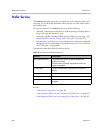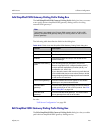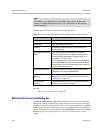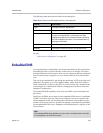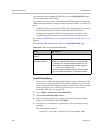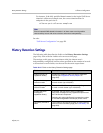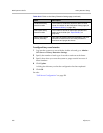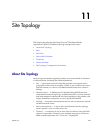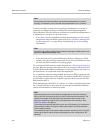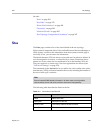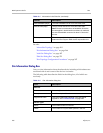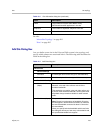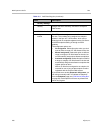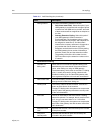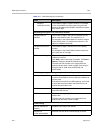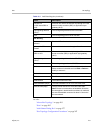
DMA Operations Guide About Site Topology
264 Polycom, Inc.
The Polycom DMA system uses site topology information for a variety of
purposes, including cascading of conferences, bandwidth management,
Session Border Controller selection, and cluster responsibility management in
a supercluster. It can get it in one of two ways:
• If you have a Polycom RealPresence Resource Manager or CMA system,
integrate the Polycom DMA system with it (see “Resource Management
System Integration” on page 169) to automatically get its site topology
information.
• If you don’t have a Polycom RealPresence Resource Manager or CMA
system, enter site topology information about your network directly into
the Polycom DMA system’s site topology pages.
If your Polycom DMA system is superclustered (see “About Superclustering”
on page 209), site topology data only needs to be created (or obtained from a
Polycom RealPresence Resource Manager or CMA system) on one cluster of
the supercluster. It’s replicated across the supercluster.
For a conference with cascading enabled, the Polycom DMA system uses the
site topology information to route calls to the nearest eligible MCU (based on
pools and pool orders) that has available capacity and to create the cascade
links between MCUs.
When determining which MCU is “nearest” to a caller and which path is best
for a cascade link, the system takes into account the bandwidth availability
and bit-rate limitations of alternative paths.
Note
Site topology information provides a logical model representation of a network
topology, not necessarily a fully accurate literal representation of a full network.
Note
Integration with a Polycom RealPresence Resource Manager or CMA system is not
supported in Maximum security mode.
Note
Cascading always uses a hub-and-spoke configuration so that each cascaded
MCU is only one link away from the “hub” MCU, which hosts the conference. The
conference is hosted on the same MCU that would have been chosen in the
absence of cascading, using the pool order applicable to the conference. See
“MCU Pool Orders” on page 141.
The cascade links between RMX MCUs must use H.323 signaling. For conferences
with cascading enabled, the Polycom DMA system selects only MCUs that have
H.323 signaling enabled.
This cascade link requirement doesn’t affect endpoints, which may dial in using SIP
(assuming the MCUs and the Polycom DMA system are also configured for SIP
signaling).



